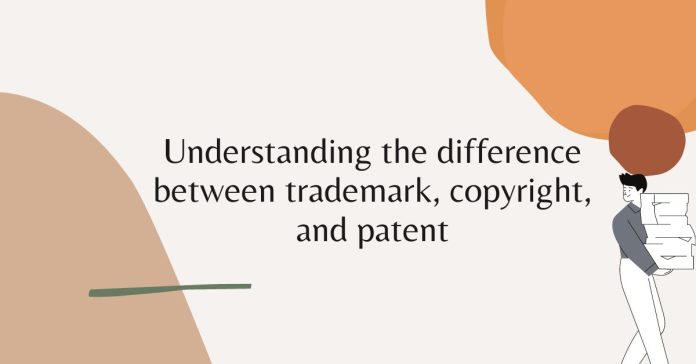Explanation of the importance of intellectual property protection
Intellectual property protects a company’s brand, products, and innovations. It refers to creations of the mind, such as inventions, literary and artistic works, symbols, names, images, and designs used in commerce. Protecting intellectual property is essential for companies to build their brand, establish customer trust, and prevent infringement from competitors.
Overview of the differences between trademark, copyright, and patent
Trademarks, copyrights, and patents are the three primary forms of intellectual property protection. Understanding their differences is essential to ensure that your intellectual property is protected most effectively.
Trademark
Definition of trademark
A trademark is a symbol, design, or phrase representing a company’s brand and distinguishing its products or services from its competitors. Trademarks are used to identify and protect a company’s reputation and its products or services.
Characteristics of a trademark
Trademarks must be unique and distinguishable from existing brands. They must also be used in commerce to identify a company’s products or services. The trademark must be in use for a certain period of time and must have acquired secondary meaning in the marketplace. This means that the public associates the brand with a specific source of goods or services.
Examples of trademarks
Examples of trademarks include company names, logos, and product names. For example, Nike’s “Swoosh” logo and Apple’s “Apple” logo and Facebook have “FB” are recognizable trademarks that identify the companies and their products.
Copyright
Definition of copyright
A copyright protects original works of authorship, such as books, music, and software. Copyrights protect the expression of an idea but not the idea itself. The purpose of copyright is to ensure that the creator of a work is recognized and compensated for their efforts.
Characteristics of a copyright
Copyrights provide the owner exclusive rights to reproduce, distribute, and perform the work. The copyright owner can control the use of their work and prevent others from copying or using it without permission. Copyright protection typically lasts for the life of the creator plus a certain number of years after their death.
Examples of copyrights
Examples of copyrights include books, music, and software. For example, a novel written by an author is protected by copyright, and the author has the exclusive right to reproduce, distribute, and perform the work.
Patent
Definition of patent
A patent protects new and valuable inventions like machines, processes, and products. The purpose of a patent is to promote innovation by allowing inventors to control the use of their invention for a set period. This incentivises inventors to invest the time and resources necessary to develop new and valuable inventions.
Characteristics of a patent
Patents provide the owner exclusive rights to manufacture, use, and sell the invention for a set period. This exclusivity gives the inventor a competitive advantage and allows them to recoup their investment in the invention. An invention must be new, non-obvious, and valuable to be eligible for a patent.
Examples of patents
Examples of patents include technological innovations, medical devices, and consumer products. For example, a new medical device may be protected by a patent, giving the inventor exclusive rights to manufacture and sell the device.
Conclusion
Trademarks, Copyrights, and Patents are necessary forms of intellectual property protection that help to secure and protect a company’s creations, brands, and inventions. Understanding the differences between these forms of protection is essential for companies to ensure that their intellectual property is protected most effectively. Working with a knowledgeable legal professional, such as those at Agarlaws, can help companies navigate the complex world of intellectual property and make informed decisions about the best protection for their specific needs and circumstances.


